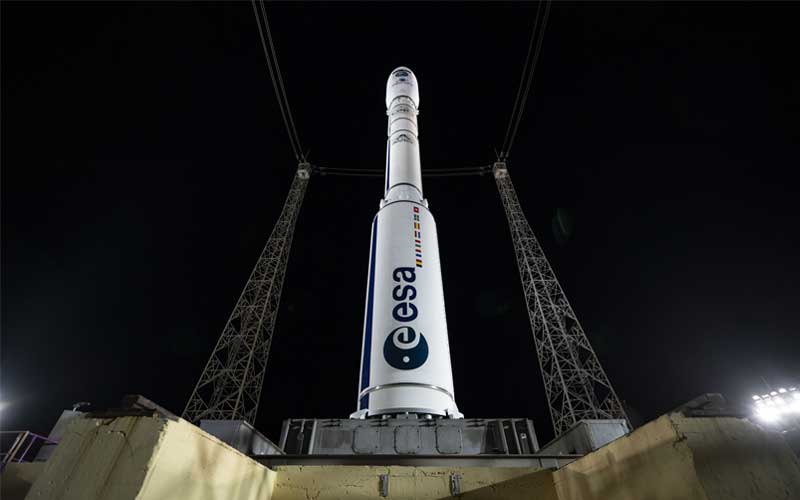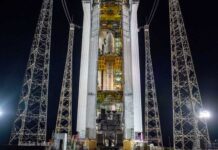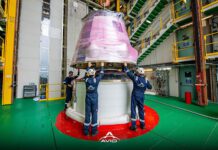
The final mission of the first-generation Vega rocket has been completed with the successful deployment of the third Copernicus Sentinel-2 Earth observation satellite into orbit.
Liftoff of the rocket’s curtain call occurred at 03:50 CEST on 5 September from the Guiana Space Centre in French Guiana. Approximately 58 minutes after lifting off, the Vega AVUM upper stage deployed the Sentinel 2C satellite into orbit. Around 14 minutes later, ESA received a signal from the satellite confirming that it was deployed successfully.
“Europe’s Vega rocket launched the previous two Sentinel-2 satellites in 2015 and 2017, so this launch was a fitting farewell to a very successful rocket,” said Toni Tolker-Nielsen, ESA director of space transportation.
The Legacy of Vega
Vega was first conceived in the 1980s and was originally called the San Marco Scout. It was later renamed to Vega, which stands for Vettore Europeo di Generazione Avanzata (Advanced Generation European Carrier).
In 1998, the project was adopted by ESA, with France, Belgium, the Netherlands, Spain, and Italy signing on to participate in the programme. France, however, wasn’t all the way on board with the project, and in September 1999, the country decided to revoke its support. Italy then threatened to pull its support from the further development of Ariane 5, and France backed down, agreeing to continue its support of the programme. This would not be the last time the two countries disagreed on the rocket’s future.
Vega was first launched on 13 February 2012. Since then, the rocket has completed 22 flights, 20 of which were successful. Notable missions launched aboard the rocket include ESA’s IXV reentry technology demonstration, the three Sentinel 2 satellites, and a number of spy satellites for Italy, Turkey, and Morocco.
The Vega rocket utilized for this morning’s launch of Sentinel 2C also marked a notable chapter in the rocket’s history. In 2023, Italian rocket builder Avio discovered that it had inadvertently destroyed two of four propellant tanks needed for the final Vega rocket’s AVUM upper stage. The resulting solution employed elements of a Vega C AVUM+ upper stage to create what has been dubbed FrankenVega.
The rocket’s most notable failure occurred on 11 July 2019, which resulted in the loss of Falcon Eye 1, a spy satellite from the United Arab Emirates Armed Forces. The failure led to the largest insurance claim for a satellite launch failure at $411.21 million.
What comes next?
With the retirement of the first-generation Vega rocket, the transition to the upgraded Vega C rocket is now complete. However, the rocket remains grounded following a December 2022 failure and the subsequent failure of a recertification static fire test of the rocket’s second stage.
In May, Avio completed the first of two recertification tests of the rocket’s Zefiro-40 second stage with a redesigned nozzle. The second test is expected to be conducted in October, followed by a return to flight launch before the end of the year.
“Teams are already preparing for the next Vega launch, the upgraded Vega C, by the end of the year,” said Tolker-Nielsen. “Today’s liftoff was Vega’s 20th successful launch in its 12 years of service. Farewell Vega, long live Vega C!”
The commercial exploitation of Vega C in the future will shift away from the rocket’s current operators, Arianespace.
In November 2023, ESA member states agreed to Italy’s request that the responsibility to market and manage Vega rocket launches would be transferred to Avio. Since its maiden flight, Arianespace has been responsible for marketing and managing launches aboard the rocket.
Under the terms of the agreement, which were finalized in July 2024, Arianespace will continue to manage the launch of Vega C flights up to and including flight VV29, which is expected to be launched in late 2025. Responsibility for the rocket will then be transferred to Avio for flight VV30 and onward.




